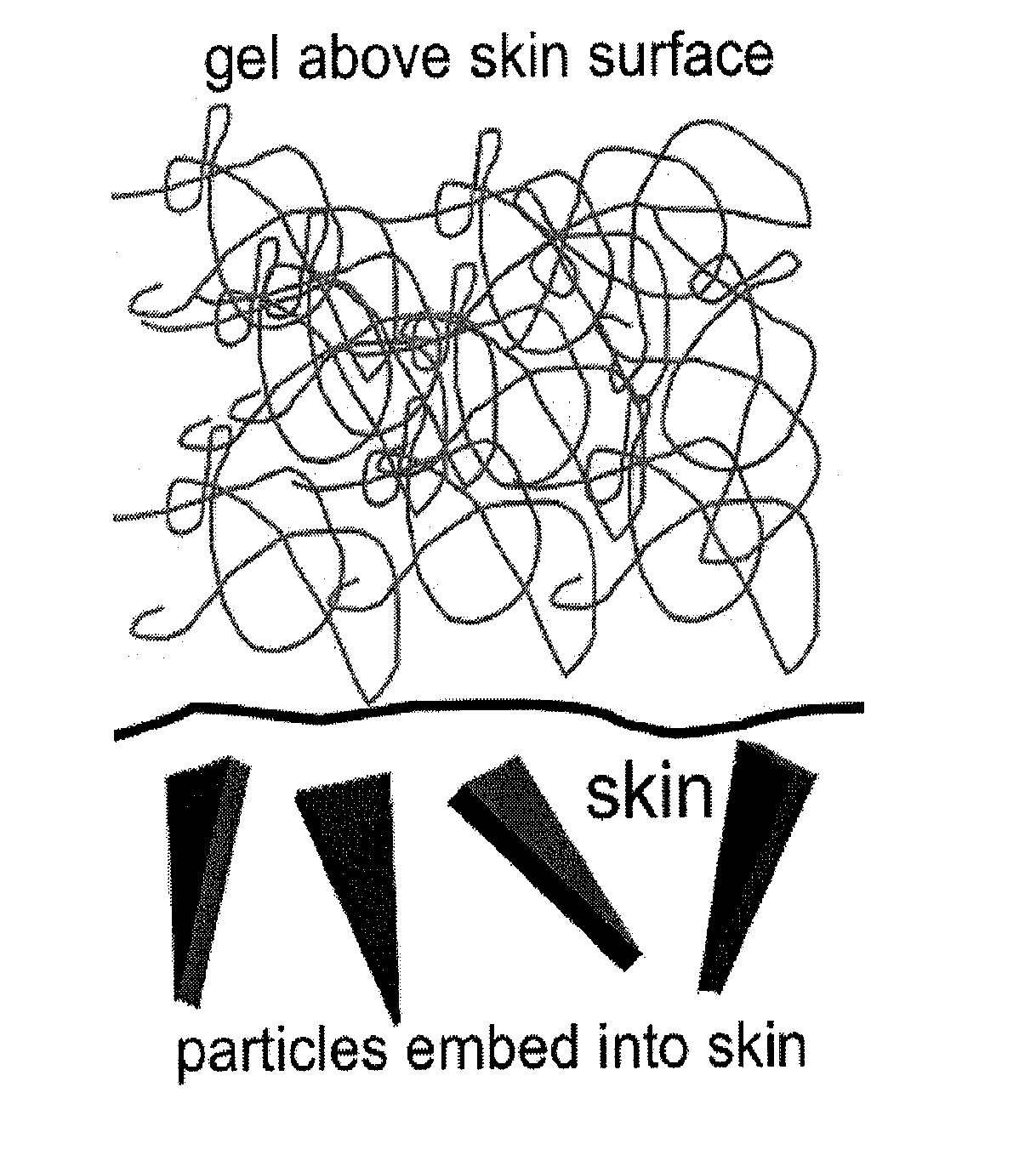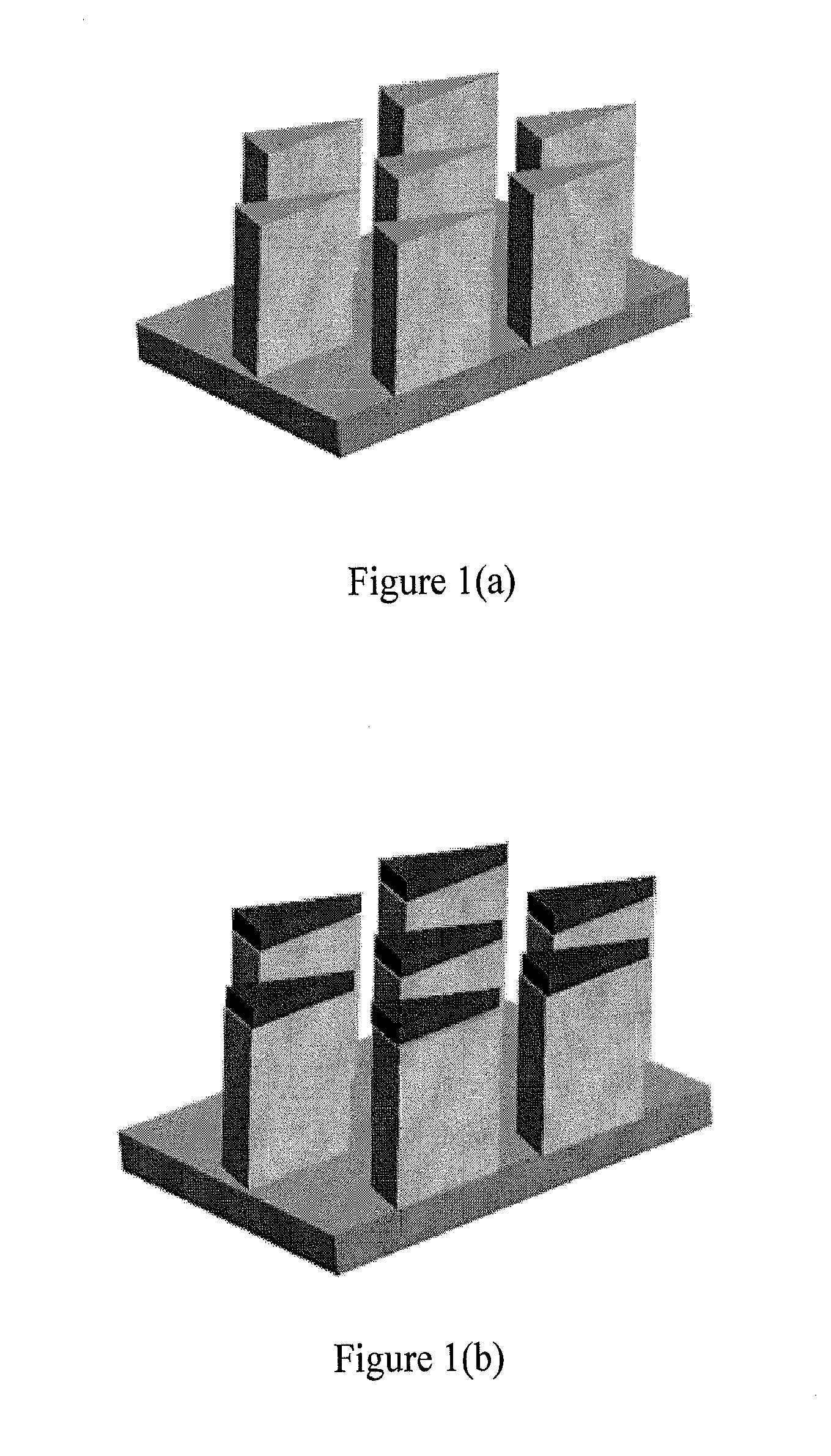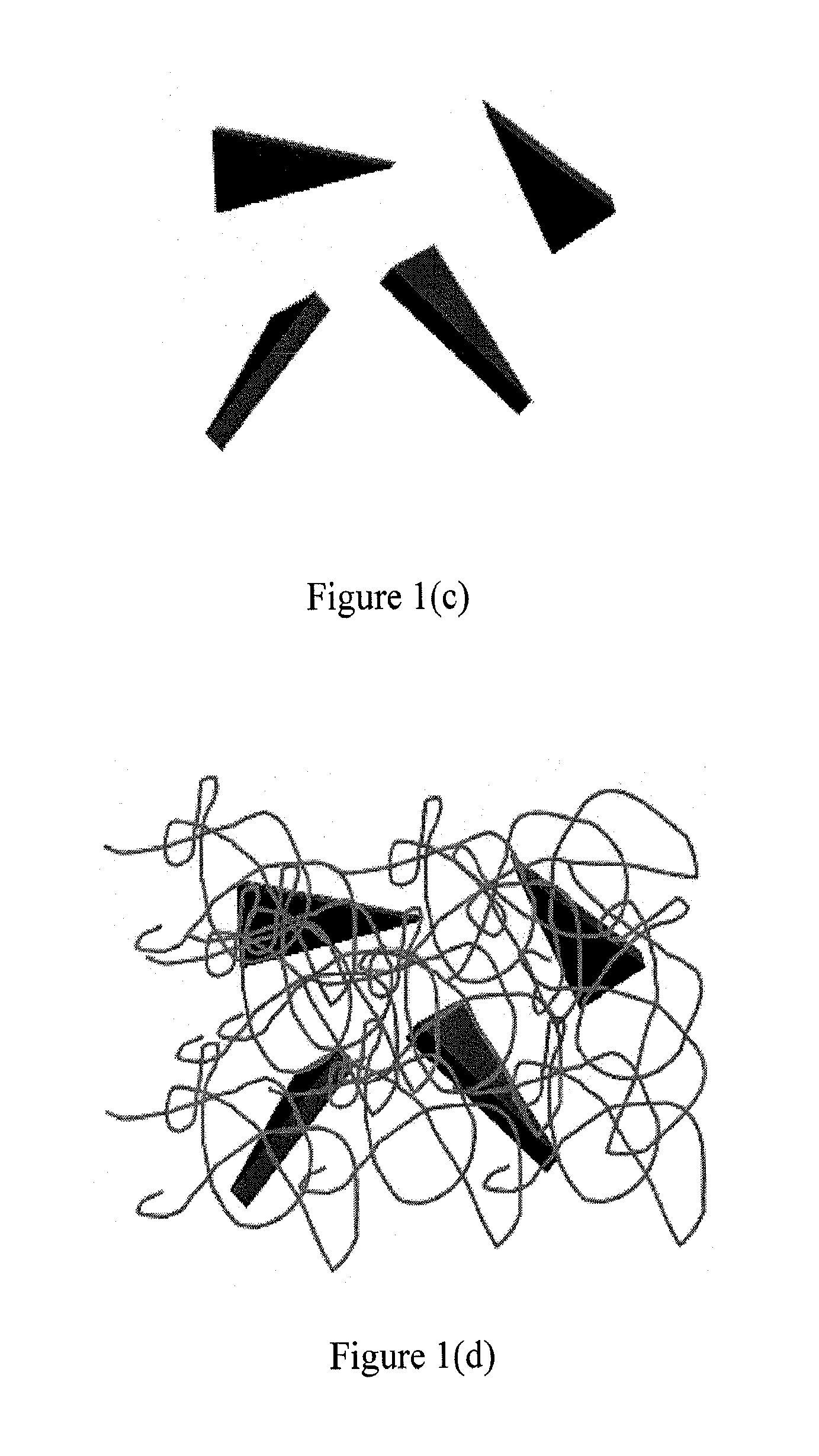Process for making a topical scrub
a topical scrub and composition technology, applied in the direction of emulsion delivery, medical preparations, solution delivery, etc., can solve the problems of inability to complete the full course of recommended medication through repeated applications over a sustained duration, recurrence of undesired symptoms, and lack of custom-made methods for topical scrubs. achieve the effect of at least facilitating embedding
- Summary
- Abstract
- Description
- Claims
- Application Information
AI Technical Summary
Benefits of technology
Problems solved by technology
Method used
Image
Examples
first example embodiment
A First Example Embodiment
[0056]The following example embodiment describes a process for fabricating a topical scrub containing one or more customized anisotropic particles and applying said topical scrub to a selected topical surface to effectively treat said selected topical surface.
[0057]Customized anisotropic particles are mass-produced for a topical scrub using pillar deposition templating, a form of relief deposition templating. A portion of a solid pillar template is created (e.g. using a material such as silicon) as shown in FIG. 1(a), typically by a lithographic process. The triangular cross-sectional shapes of the pillars on the template have been designed to impart pointed shape features to the customized anisotropic particles. A pillar template typically has a spatial dimension of about 100 mm or larger, and a pillar on the template typically has a maximum cross-sectional dimension that is less than about one millimeter. Optionally, the surfaces of a pillar template can ...
second example embodiment
A Second Example Embodiment
[0060]An example of a plurality of customized anisotropic particles embedded into an epidermal layer of human skin after an embedding action is shown in the optical microscope image in FIG. 2. Said customized anisotropic particles (see the plurality of dark cross-shaped regions at different positions and orientations) are sub-millimeter, plate-like, have a cross section in the shape of a square cross, a maximum spatial dimension of 4.5 microns and a thickness of 1 micron, are composed of a photo-crosslinkable polymeric material (photoresist AZ5214), and have been created using a method of spatially patterned radiation by ultraviolet stepper lithography. These cross-shaped anisotropic particles have been dispersed into water at a particle volume fraction of about 0.3%, contacted with an epidermal layer of human skin, and a scrubbing action (rotary motion with a glove-protected finger while applying pressure) has been applied for thirty seconds, causing the ...
PUM
| Property | Measurement | Unit |
|---|---|---|
| particle volume | aaaaa | aaaaa |
| volume fraction | aaaaa | aaaaa |
| volume fraction | aaaaa | aaaaa |
Abstract
Description
Claims
Application Information
 Login to View More
Login to View More - R&D
- Intellectual Property
- Life Sciences
- Materials
- Tech Scout
- Unparalleled Data Quality
- Higher Quality Content
- 60% Fewer Hallucinations
Browse by: Latest US Patents, China's latest patents, Technical Efficacy Thesaurus, Application Domain, Technology Topic, Popular Technical Reports.
© 2025 PatSnap. All rights reserved.Legal|Privacy policy|Modern Slavery Act Transparency Statement|Sitemap|About US| Contact US: help@patsnap.com



